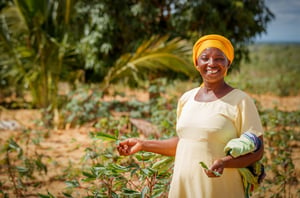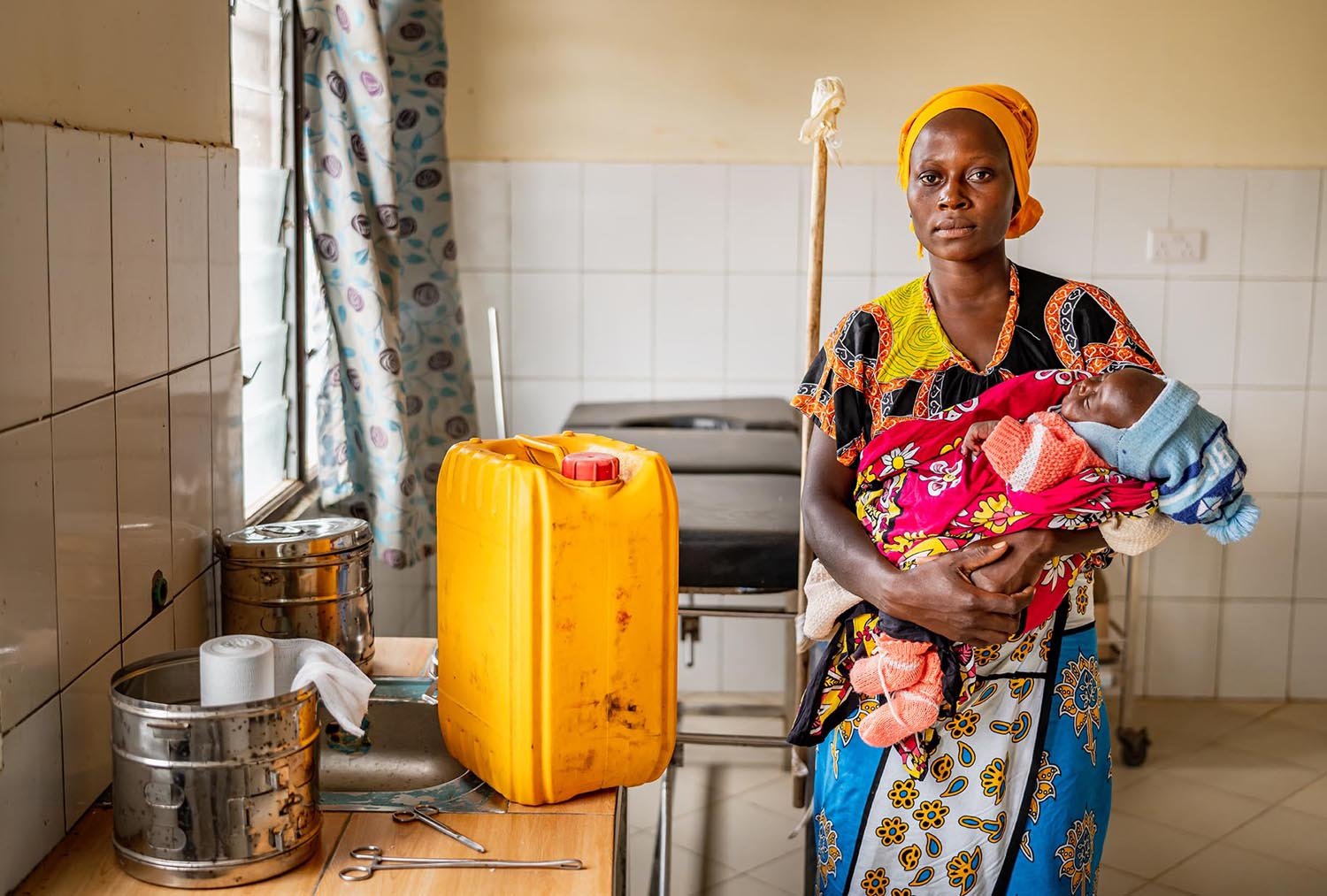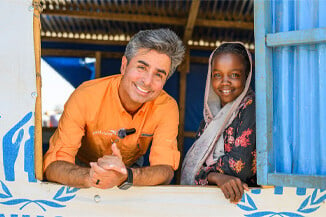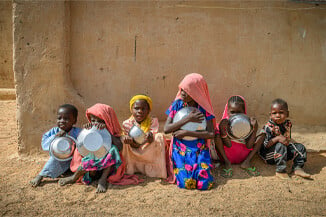 |
World Vision continues to press forward with Farmer Managed Natural Regeneration[i], with a number of exciting developments taking place across the African continent. This lays the natural resource management foundation for World Vision’s THRIVE program. World Vision is pushing forward with strategic partnerships, global and regional platforms, developing an evidence base, and pushing ahead with large scale projects.
Strategic Partnerships
The Evergreen Agriculture Partnership has been created by World Vision and some key partners in order to support the need across Africa to massively scale up the types of efforts that will build improved and resilient livelihoods for smallholder farmers. Like many parts of the world, Africa has large amounts of degraded lands which need to be restored while still being used for agriculture. Together with the World Resources Institute, an influential economic and environmental policy think tank, and the World Agroforestry Center, a leading scientific research organization, and chaired by H.E. Dr. Dennis Garrity, Drylands Ambassador for the United Nations Convention to Combat Desertification (UNCCD) and a world authority in agroforestry, the Evergreen Agriculture Partnership (EVAP) is working to restore degraded lands while keeping smallholder farmers increasingly productive and profitable.
On April 9–11, 2018, the EVAP hosted a workshop in Nairobi, Kenya bringing together World Vision and Conservation International, a global leader in environmental research. As an outcome of that successful workshop, Conservation International has now joined the EVAP and together with World Vision are actively exploring large scale proposals using FMNR in Africa.
EVAP is championing not only the massive scaling up of FMNR, but is bringing together the world’s leading international non-governmental organizations (NGO’s) and research organizations around restoration.
Global and Regional Platforms
In 2017, World Vision signed onto the African Forest and Landscape Restoration Initiative (AFR100), an initiative by 25 (and counting) African countries to restore 100 million hectares (almost 250 million acres or 390,000 square miles) of degraded land across the continent.
In 2017, World Vision was also accepted as the first development NGO member of the Global Partnership for Forest and Landscape Restoration (GPFLR), formed in response to the Bonn Challenge, the global effort to restore 150 million hectares of the world's deforested and degraded lands by 2020 and 350 million hectares by 2030.
Growing evidence base
A noteworthy study on the challenges and methods of dealing with droughts in the drylands was recently released by the World Bank. The study highlighted the remarkable impact of FMNR. The study[ii] of 10 countries in East and West Africa looked at many issues, including using FMNR, and showed that when using FMRN the “projected number of poor, drought-affected people living in drylands in 2030 fell—compared to the Business As Usual scenario—by 13 percent with low density tree systems, and by more than 50 percent with high-density tree systems”.
WVUS’ own study is in process in collaboration with IFPRI (International Food Policy Research Institute) researching FMNR based approaches in Mali and its impact on livelihoods. The Phase I results of the study (which ran for three years) indicate that staple food yields like sorghum and cowpea improved by about 33% and 38% respectively when grown using FMNR. Phase II of the study, now underway, examines how adding Savings Groups and Local Value Chain Development to FMNR affects both staple crop yields and household profitability. The study is scheduled to conclude in December 2018.
Large Scale Projects
World Vision is a key member of a five country Drylands Development project funded by the Dutch Government covering Burkina Faso, Ethiopia, Kenya, Mali and Niger that is transitioning households from subsistence farming and emergency aid to sustainable rural development.
Another large scale multi-country project initiated by the EVAP, involving World Vision, and funded by the European Commission kicked off in 2017. This project scales FMNR across 8 countries in the Sahel and East Africa including Ethiopia, Ghana, Kenya, Mali, Niger, Senegal, Somalia, and Rwanda with a goal of restoring 1 million hectares of land and impacting some 500,000 smallholder farmers by improving livelihoods, food security and resilience to climate change.
Beating Famine III – Sahel, Mali November 27-28, 2018
The EVAP was an outcome of a landmark conference, entitled Beating Famine, held in Nairobi, Kenya in 2012 that World Vision organized. The Beating Famine II conference was held in Lilongwe, Malawi in 2015, and launched FMNR is southern Africa. The next Beating Famine III conference will be held in Bamako, Mali on November 27-28, 2018 and will bring together global donors and partners including the World Bank, the Gates Foundation, GIZ, the United Nations’ Food and Agriculture Organization, and others around FMNR practices. This conference promises to reveal the exciting next chapter of FMNR!
__________________________
[i] FMNR aims to systematically regrow (and manage) trees and shrubs from felled tree stumps, sprouting root systems or seeds. The trees are integrated into croplands and grazing pastures, helping to restore soil structure and fertility, inhibit erosion and soil moisture evaporation, rehabilitate springs, raise the water table, and increase biodiversity. Some tree species also impart nutrients such as nitrogen into the soil. They support ground-cover growth, which improves soil carbon content. In addition, on-farm land and vegetation enhancement makes a major contribution towards conservation on site, while acting as a buffer to reduce the pressures on resource extraction from protected areas. With measurable improvements in yields, income diversification, and environmental benefits, FMNR and other evergreening practices are important tools for building improved and resilient livelihoods for smallholder farmers and graziers.
[ii] Mitigating Drought Impacts in Drylands: Quantifying the Potential for Strengthening Crop- and Livestock-Based Livelihoods, World Bank Studies. April 2018, p73.







